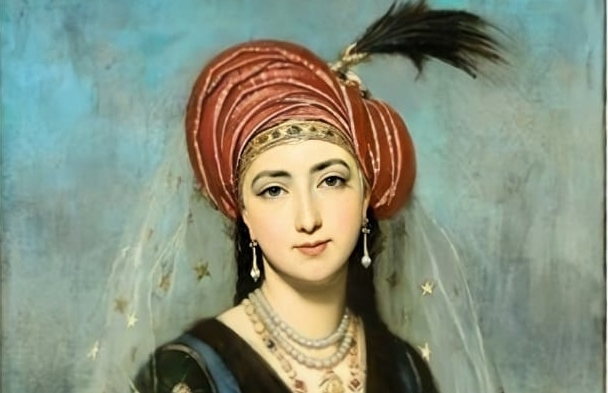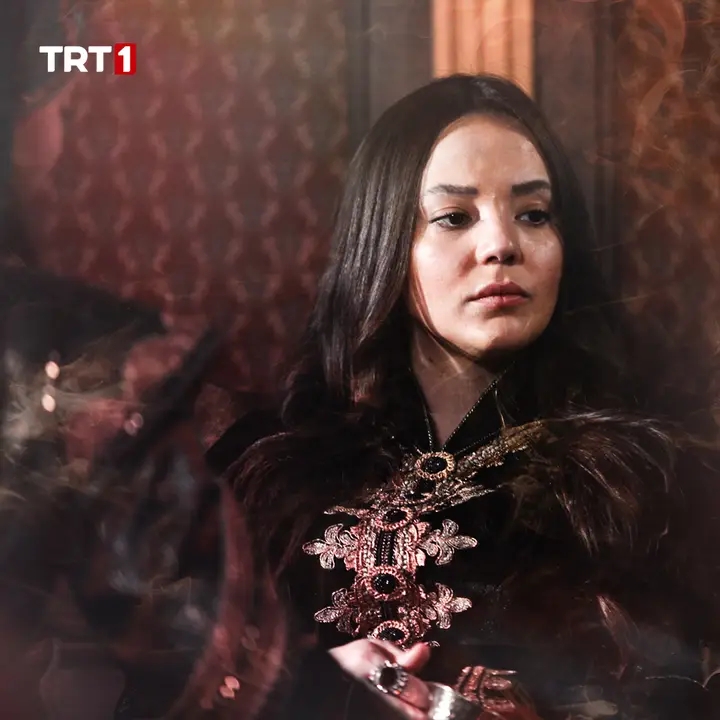Who Was Gülşah Hatun??

Gülşah Hatun: The Wife of Sultan Mehmed II the Conqueror
Gülşah Hatun, the wife of Sultan Mehmed II, known as Mehmed the Conqueror, is a historically significant figure in the Ottoman Empire’s royal lineage. Though her name is not as well known as other women of the time, her role as a consort to one of the empire’s most renowned sultans gives her a place of importance in Ottoman history. This article will explore her biography, lifestyle, role in the imperial harem, beauty, and her legacy within the royal family.

Biography and Early Life
Gülşah Hatun’s origins are not as clearly documented as some of the more famous women in the Ottoman Empire, and much of her life remains shrouded in mystery. The lack of detailed information regarding her early life or noble lineage is somewhat typical of many women in the imperial harem, whose lives were often overshadowed by the male rulers and their public affairs. However, what we do know is that she became the wife of Sultan Mehmed II, who is most famously remembered for conquering Constantinople in 1453, an event that changed the course of history.
It is believed that Gülşah Hatun was one of several women who caught the eye of Sultan Mehmed II, and through her beauty, charm, and intellect, she was chosen to be part of his harem. Like many of the women in the imperial palace, Gülşah likely came from a noble or distinguished family, though the specifics of her background are unclear.
Life in the Imperial Harem and Her Role
The role of women in the Ottoman imperial harem was complex, shaped by a variety of political, social, and cultural factors. The harem was not only a place for the Sultan to have personal relationships, but it also served as a political and strategic unit that had considerable influence on the empire. Gülşah Hatun’s position within this hierarchy would have been one of significant influence, though her exact role remains less documented than that of some other prominent consorts of the time.
As the wife of Sultan Mehmed II, Gülşah’s role in the harem would have included supporting her husband’s reign and helping manage the political intrigue that was common at the Ottoman court. The harem functioned as a union of women who, through their relationships with the Sultan, could wield significant political power. These women were often involved in matters of diplomacy, governance, and the education of future sultans.
Though less is known about her direct involvement in political affairs, Gülşah Hatun, like many consorts, would have played a key role in providing stability and unity within the royal family. The women of the harem were often seen as the emotional and political stabilizers of the Sultan’s reign, making them an integral part of the political system, even if their influence was often indirect.
Her Beauty and Good Character
In Ottoman society, the beauty and good character of a woman were highly valued, particularly for women within the royal harem. Gülşah Hatun, as the wife of one of the most powerful sultans in Ottoman history, would have been renowned for her beauty. Her attractiveness was likely a significant factor in her selection as the Sultan’s consort. However, it is important to note that beauty alone was not enough for a woman to rise to prominence in the imperial court.
Women in the harem were also admired for their intelligence, character, and abilities to engage in matters of governance. Gülşah Hatun’s good behavior and elegance would have made her an exemplary figure within the palace. In addition to her physical beauty, her grace and wisdom would have earned her the respect of the other women in the harem and the court at large. Her diplomatic skills, tact, and understanding of imperial politics likely played a role in maintaining the Sultan’s image and stability in the empire.
Her Life with Sultan Mehmed II
Gülşah Hatun’s life with Sultan Mehmed II would have been one of relative privilege, but also one marked by the challenges that came with being part of an imperial harem. Sultan Mehmed II was a ruler who spent much of his reign expanding the Ottoman Empire and securing his place in history. He was a dynamic, ambitious, and highly intelligent ruler, and his reign was characterized by significant military campaigns and administrative reforms.
While Sultan Mehmed’s attention would have been divided by the demands of ruling such a vast empire, Gülşah Hatun would have had her role in supporting him in various capacities. Whether accompanying him on campaigns or acting as an advisor during times of peace, the life of a consort was not solely about luxury and leisure but involved understanding and navigating the complexities of court life.
Though there is little historical documentation of their personal relationship, it is likely that Gülşah Hatun, like many consorts, was a loyal and supportive figure in her husband’s life. Her role was to bear children, maintain peace within the palace, and provide counsel to the Sultan when necessary.
Her Children and Legacy
One of the most important aspects of Gülşah Hatun’s legacy is her role as the mother of future leaders of the Ottoman Empire. It is believed that she gave birth to at least one son, who would go on to play a prominent role in the empire. However, historical records regarding her children are somewhat sparse, and it is unclear exactly how many sons she had. Some sources suggest that her children may have included princes who were important in the succession line of the Ottoman throne.
As with many women in the imperial harem, Gülşah Hatun’s primary duty was to bear the Sultan’s heirs, ensuring the continuation of the royal bloodline. While it is not known if her children ever ascended to the throne, their upbringing and education in the harem would have been closely tied to the political and military ambitions of their father.
Gülşah Hatun’s legacy also includes the impact she had on the women in the harem, particularly her role in shaping the lives of her fellow consorts and the future generations of royal women. Her actions and behavior within the harem likely set a standard for how other women of the court conducted themselves.
Conclusion
Gülşah Hatun, the wife of Sultan Mehmed II, may not have received the same level of attention in historical records as some other Ottoman women, but her role in the imperial harem and her impact on the royal family cannot be understated. As the consort of a great sultan and the mother of future leaders, she played an essential role in the continuation and success of the Ottoman Empire. Her beauty, grace, wisdom, and diplomacy would have been integral in the functioning of the imperial court, and her legacy continues to be part of the rich tapestry of the Ottoman royal family.
In the grand scheme of Ottoman history, Gülşah Hatun represents the quieter yet significant contributions of the women who helped maintain the power and stability of one of the world’s most influential empires.



